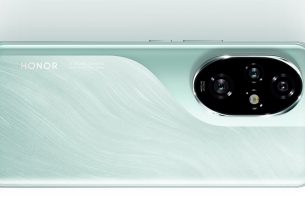
A couple of months ago, Motorola showcased its latest foldable, the
Samsung Galaxy Z Flip 5 daylight camera samples from its primary camera
Samsung’s Scene Optimiser is switched on by default and I kept it on for most of this review as the images weren’t drastically enhanced (slightly saturated colours and warmer tones) when compared to the standard photos. Portrait photos captured using the same camera also came out just fine with decent edge detection, but the subjects often came out a bit overexposed and at times with clipped highlights.
The ultra-wide camera captures average photos in daylight but these images are low on resolved detail, especially in the shadows.
Samsung Galaxy Z Flip 5 selfie camera samples
Selfies captured in daylight come out sharp and clear with good edge detection in Portrait mode. However, the primary camera does a far better job at this with much better details and definition, which is why I would strongly recommend using it instead of the selfie camera.
Samsung Galaxy Z Flip 5 low-light camera sample from the primary camera
In low light, the primary camera manages good details when using the auto-night mode (enabled by Scene Optimiser) or the dedicated Night mode. Just like the daylight photos, dynamic range comes up a bit short especially in the shadows. Street-lit scenes have average details and appear a bit oversharpened with crushed blacks in the shadows. The primary camera also has trouble locking focus in dimly-lit scenes, so the resulting photos come out soft, especially when using the Night mode.
Unlike the Motorola Razr 40 Ultra, the Samsung Galaxy Z Flip 5’s camera setup does not include a macro mode. However, the primary camera can focus on objects as close as 10-15cm and the results look just fine.
4K 30fps recorded videos appears average in terms of details, with decent colour saturation but underexposed shadows. Stabilisation is not a problem when shooting at these settings either. 4K 60fps videos showcase a steady framerate but come out shaky. HDR10+ videos recorded at 4K 30fps did not look great even though it managed better detail in the shadows. Low-light video lacked noise, but this led to flattened or blotched textures.
Verdict
Overall, the Samsung Galaxy Z Flip 5 manages better image and video capability than the Motorola Razr 40 Ultra. But neither should be purchased for this reason alone as both are quite average compared to the competition. If you seek good camera and video quality, the Samsung Galaxy S23 is a much better choice, minus the folding tricks.
Between the Motorola Razr 40 Ultra and the Samsung Galaxy Z Flip 5, I would pick the Razr because of its well-optimised cover display experience, which is currently second to none. Motorola’s MyUX software experience also remains unmatched in terms of minimal bloatware and additional apps, and is also closer to a Google Pixel-like software user experience. Then, there’s the fact that the Razr 40 Ultra also looks so much better with its slick design and that radical-looking cover display.
Where Samsung does stand out is when it comes to overall performance, optimisation and image quality. We’ve compared the Oppo Find N2 Flip with the Galaxy Z Flip 4 previously and Samsung did come out on top back then as well. However, its main standout feature isn’t as useful as I expected it to be. If you own a Galaxy Z Flip 4, I’d recommend sticking with it for now.


